The Local SEO Checklist Most Small Businesses Overlook
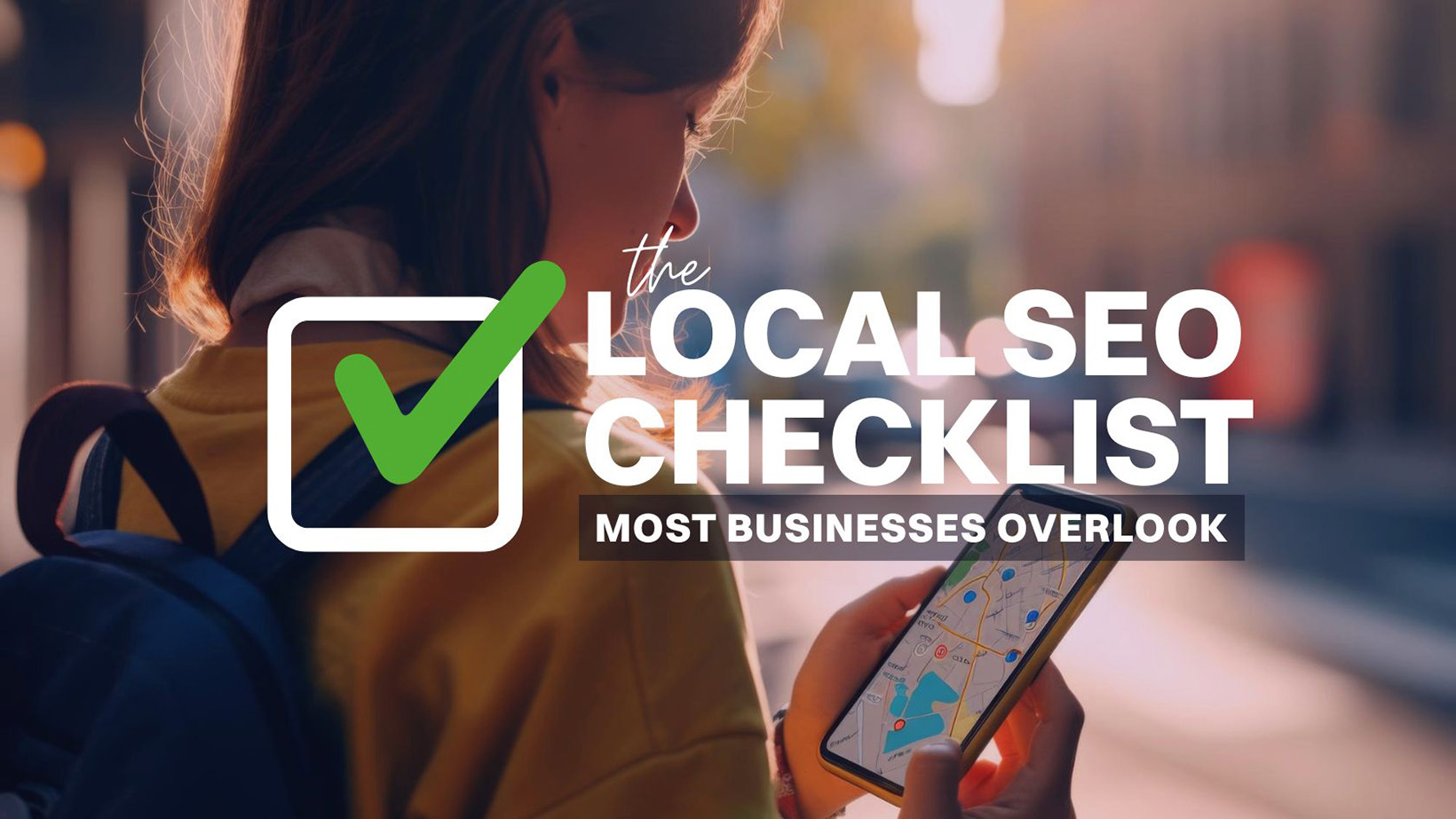
We see it all the time.
A business does everything the “checklist” says. The company has claimed its Google Business Profile, its NAP info is consistent, it has a handful of good reviews, and maybe even a few blog posts with local keywords sprinkled in.
But they’re still not showing up where they want to. The phones aren’t ringing, and their competitors—some with less experience and worse reputations—are outranking them.
That’s because the basics of local SEO aren’t enough.
Search engines are more intelligent, and local competition is more brutal. What worked five years ago barely moves the needle now.
The real difference? It’s in the steps most businesses skip — the ones that quietly build visibility, trust, and momentum over time.
Once you know those steps, fixing the gaps in your strategy is much easier.
Taking Local SEO to the Next Level
As we know, Google’s algorithm continues to evolve. It no longer looks only at keywords and proximity.
It’s weighing real-world signals:
- Do people engage with your site?
- How complete and trustworthy are your business listings?
- Does your content thoroughly answer what users are searching for?
A recent study found that nearly 60% of Google searches now end without a click.
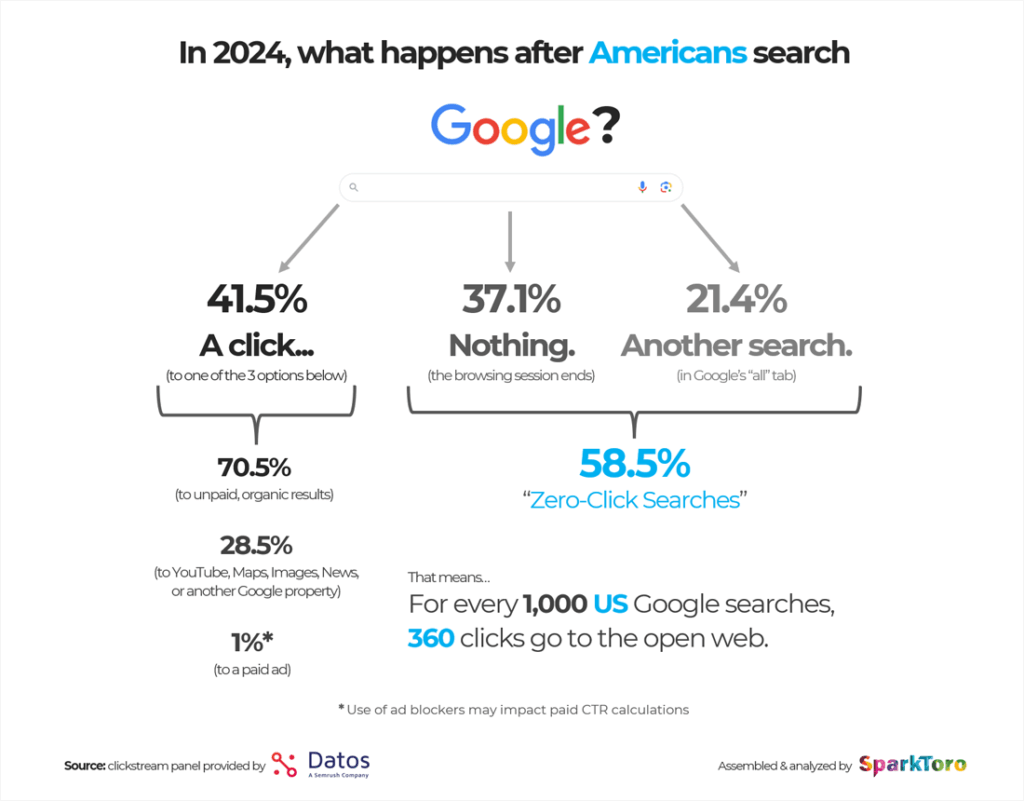
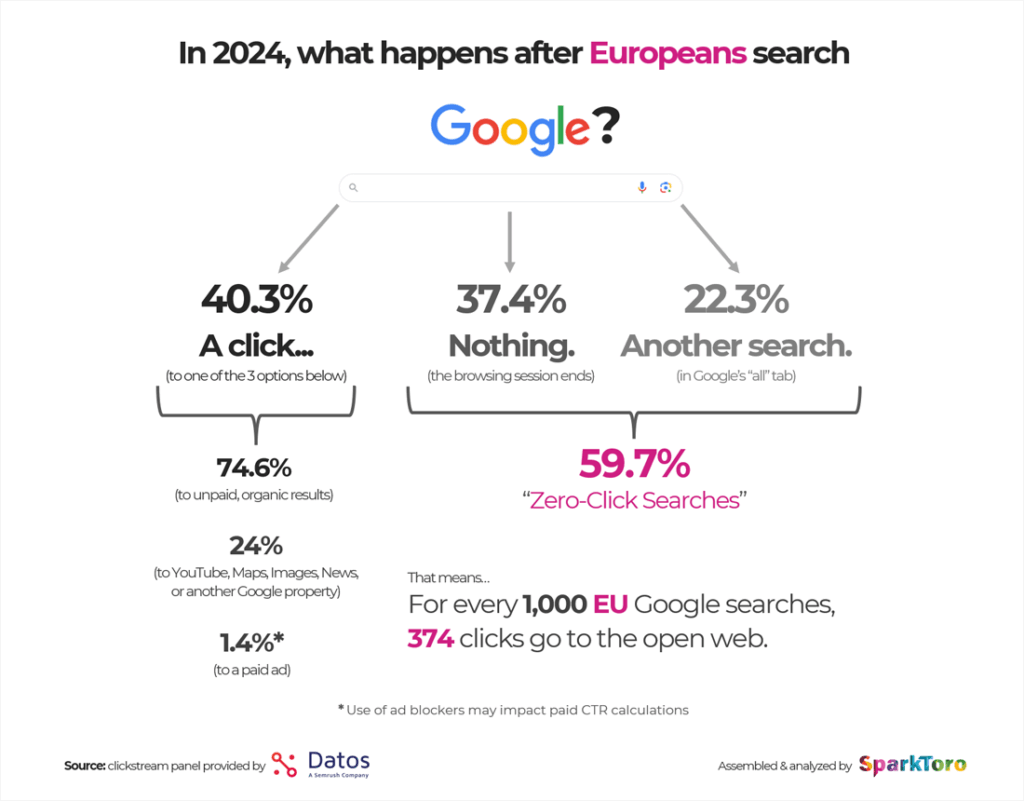
People make decisions based on the search results. That means showing up isn’t enough — you need to stand out in the local pack, in map views, rich snippets, and reputation.
The businesses that go deeper, who tailor their content, structure, and reputation around real customer behaviors, are seeing the payoff:
- More qualified local leads
- Higher rankings in the map pack
- Increased calls, visits, and bookings
This isn’t about quick fixes. It’s about building a stronger presence over time that Google sees as credible, and your customers see as obvious.
If you only follow the standard playbook, you’re sacrificing visibility (and revenue).
7 Overlooked Tactics That Belong on Your Local SEO Checklist
There’s a difference between doing local SEO and doing it well.
SEO basics are plastered everywhere, and your competitors are already implementing them. What they’re not doing is going further. They’re not tightening up the details, leaning into the data, or building real-world signals that search engines actually trust.
That’s where the edge lives.
The tactics ahead aren’t beginner tips. They’re often skipped, rarely discussed, and they’re exactly where better results start to show up.
If your profile’s claimed, your citations are solid, and your NAP is squared away… you’re ready for what’s next.
1. Showcase Your Local Impact in Your Content
Most businesses mention their city.
Few actually show up in the places their customers live and search.
Generic service and location landing pages with a city name slapped in the title won’t cut it anymore. Google’s algorithm is tuned to location relevance — not just what you say, but how specific and valuable it is to the people searching nearby.
Your content should go beyond “we serve [city name].” Build pages and posts that speak directly to neighborhoods, ZIP codes, and local landmarks.
Create market-relevant content that feels grounded in the community. Some examples include:
- A case study that demonstrates your local impact on a business in South Austin.
- A blog post sharing your experience at a community event in Milwaukee and its implications for the future market.
- A roundup of relevant industry-related events taking place in Brookfield.
When you publish that content, connect the dots by linking related location pages and blog posts to help Google understand your local footprint. It’s a small step toward establishing authority for search engines and your readers.
2. Implement Advanced Schema Markup
When it comes to Schema, most businesses stick with the basics— business name, address, phone number—and leave it at that.
However, Google’s understanding of local relevance goes deeper than that. The more structured data you give it, the more context it has to connect your business with real-world searches — and show your listings in richer, more visible ways.
For example, a dog grooming service in Madison might use schema to mark up not just its business details but also the exact neighborhoods it serves, the types of grooming packages it offers, its hours (including holiday closures), and customer reviews tied to specific services.
That’s not fluff — it’s structure. It also helps Google to provide the correct details for the right searcher at the right time. Here are a few examples of going the extra mile with your structured data:
- Add fields like areaServed, geoCoordinates, hasMap, and review to your existing local business schema.
- If you offer multiple services, use the Service schema to separate them and tie those services to location pages when possible.
- If you consistently write articles, consider implementing the Article, NewsArticle, or BlogPosting schema to help search engines better understand your content, highlight it in rich results, and increase the chances of it appearing in relevant search results.
This isn’t about chasing ranking tricks. It’s about giving Google a better context to work—something most small businesses never take the time to do.
That’s your edge.
3. Optimize for Voice Search
How people search has changed, and many small businesses haven’t caught up.
Voice search isn’t formal — it’s conversational. People ask full, natural questions like, “Hey Google, who does HVAC near me?” or “Where can I get my oil changed in Cedarburg?”
And they’re doing it a lot. Roughly 149.8 million people in the U.S. use voice assistants.
These aren’t typed keywords — they’re questions asked on the go, often with a clear intent to act. If your content isn’t written in a way that answers those questions plainly and conversationally, you’re probably missing out.
One of the simplest ways to close that gap is to add a clear, natural-language FAQ section to your website — the kind that sounds like it came from a real conversation, not a marketing manual.

Use questions your customers ask, and answer them clearly, as if you were conversing casually with the searcher.
That language doesn’t just match how people search — it increases your chances of showing up in voice results, featured snippets, and local packs.
And remember: you don’t have to stuff every page with questions. Just ensure that some of your content mirrors how your customers talk. That’s what voice search is listening for.
4. Improve Behavioral Signals
You can have all the right keywords in all the right places, but if people don’t engage with your site or your listings, Google notices.
Behavioral signals are real-world indicators that show that users are finding value. Examples include:
- User engagement with your listing. Are users calling, requesting directions, or reading reviews?
- Are they exploring multiple pages on your site?
These aren’t vanity metrics — they’re trust signals. And they carry weight in how your business ranks locally.
Start by defining what successful engagement is for you. It might mean phone calls, contact form submissions, website visits to a designated landing page, or time spent on key services.
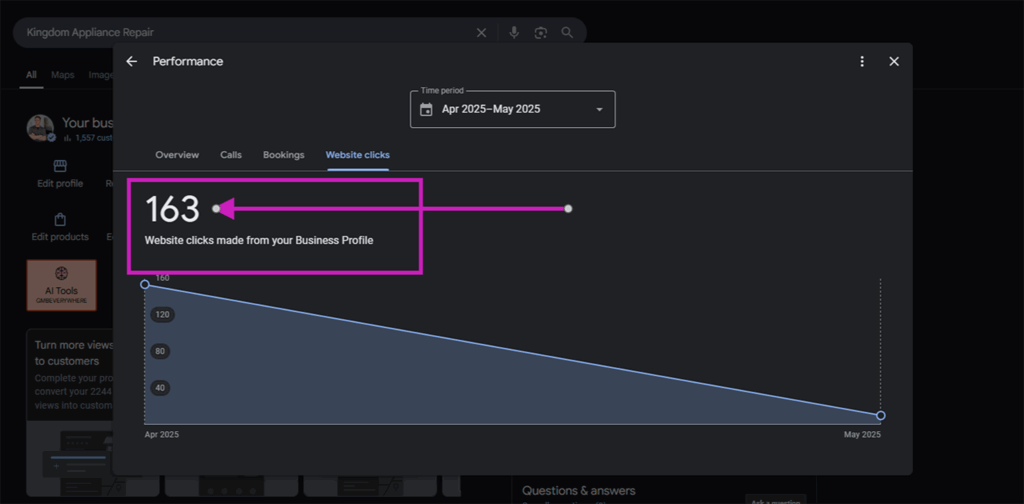
Then, look at where engagement is dropping off. Are users dropping off after your homepage? Are they finding what they need fast, or bouncing between pages without taking action?
A stronger local presence starts with a better user experience. Clean design, clear navigation, good messaging, and updated business info can all keep people engaged — and signal to search engines that your business is the right choice.
5. Use Geo-Fencing and Local Ad Targeting
This one flies under the radar for most small businesses — and that’s precisely why it works.
Geo-fencing lets you set a virtual boundary around a real-world location. When someone enters that area with their phone, you can show them a targeted ad, often within minutes. Local restaurants, salons, retail shops, and even service-based businesses can use this to get in front of people right when it matters.
You don’t need a fancy tech stack to pull it off. Google Ads and Meta Ads let you target by physical location — sometimes down to a specific street, ZIP code, or block radius. You can set up campaigns that only show to people within a few miles of your shop, competitors’ locations, or even local event venues.
Example: A coffee shop like Turnstile Coffee Beer Cocktails and Burgers, situated near Q2 Stadium in Austin, could run a mobile ad during Austin FC home games that says, “Skip the traffic — grab your coffee here before kickoff,” that would only show to users in that zone during game-day hours.
That’s geo-fencing in action.
You can also use it to test different offers in different neighborhoods. For example, a lawn care company could run separate promos for specific ZIP codes and see which one drives the most quote requests.
It’s a smart way to localize without guessing.
The best part? This strategy doesn’t just drive foot traffic or form fills. It creates awareness and brand recall. Even if someone doesn’t click, you’re now on their radar the next time they Google “lawn care near me.”
When your paid strategy is tied to the same neighborhoods you’re targeting with local SEO, the two efforts support each other, which is precisely how you build momentum in competitive areas.
6. Internal Linking With Location Intent
Most businesses build local pages — then leave them sitting in a silo.
But if your internal links aren’t pointing users (and search engines) toward those pages, they’re not doing much work. Google relies on internal links to understand how your site is structured — and which pages are most important.
Here’s how to strengthen your internal linking strategy with local intent:
- Link from high-traffic pages: Got a blog post on “Top Questions to Ask Your Contractor”? Link it to your “Home Renovation Services in South Austin” page. If your homepage gets the most traffic, use it to link directly to key location-based service pages, like “Roof Repair Company in San Antonio.”
- Use location-specific anchor text: Instead of vague phrases like “click here,” use terms that reflect real local searches:
- “Landscaping services in Georgetown”
- “Commercial plumbing in Cedar Park”
- “Web design for Austin startups”
- Build local content hubs: Publish multiple pieces of content tied to a specific area — say, three blogs on outdoor renovations — and link them all to a local service landing page like “Landscaping Services in Milwaukee.” That cluster tells Google that the page has depth and relevance to the location.
- Link naturally, not mechanically: Your anchor text shouldn’t sound like it came from a spreadsheet. Work local phrases into your copy like your customers would say them out loud.
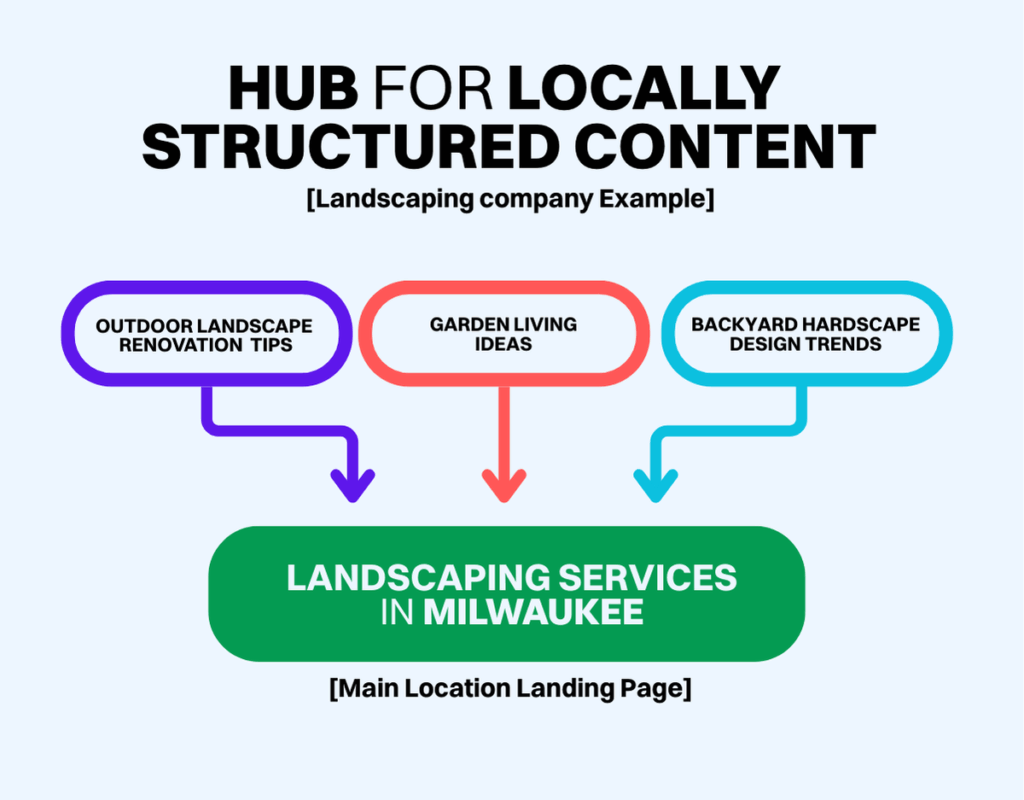
When your internal links reflect how real people search for services in Austin neighborhoods, Google notices — and so do your site visitors.
7. Keep Your Local Presence Active
Local SEO isn’t a one-and-done project; many businesses fail by treating it as such.
Google values fresh, consistent signals. That means your local presence — from your website to your Google Business Profile — needs regular attention.

Here’s how to stay current without overcomplicating it:
- Update photos and media regularly: Don’t let your listings go stale. Use high-quality, relevant visuals, and update the EXIF data (location, time, device info) to reinforce local context.
- Respond to reviews: Whether it’s praise or a complaint, engaging with feedback shows you’re active and builds trust with both search engines and potential customers.
- Use Posts on Google Business Profile: Share updates, events, seasonal offers, or helpful tips. These show Google that you’re engaged and give customers a reason to check back.
- Revisit key pages every quarter: Update service details, refresh internal links, and check that business hours, offers, and contact info are accurate across platforms.
Consistency tells Google — and your customers — that you’re not just in business… you’re showing up.
Your Local SEO Checklist, Done Right With JS Interactive
Most local SEO checklists stop at the surface, and results stall.
JS Interactive helps small businesses go deeper with strategies built for real local visibility.
We focus on what actually helps you show up, get found, and stay competitive.
Ready to tighten up your local SEO strategy? Contact us to get started.